Window tint is a common upgrade for both car enthusiasts and non-enthusiasts alike. There is always a concern with the legality of window tint, and it is no different when it comes to tinting your headlights or tail lights.
Tinted or smoked tail lights can give your car a unique look depending on how it’s executed. It’s definitely a more aggressive aesthetic than plain, red stock lights.
If you’re thinking about tinting your tail lights, you need to be aware of your local laws before doing so to avoid legal issues down the road.
In this guide, you’ll find out if tinted tail lights are legal, along with other relevant information on lighting laws in every state, including Texas, Florida, and California.
Blacked-Out Tail lights Are Illegal
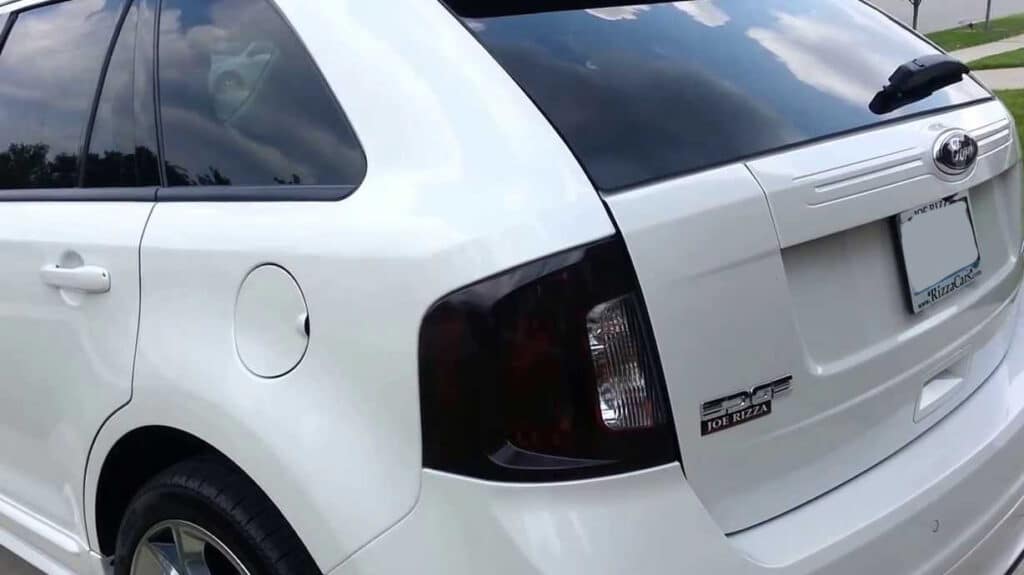
For street-driven cars, fully blacked-out tail lights are illegal no matter which state you’re in. The only cars that can have blacked-out tail lights are those that aren’t driven on public roads, such as race cars.
Let’s go over the local regulations for tail lights, starting with where it is always illegal to tint your tail lights, then onto states that have more ambiguous rules.
States That Prohibit Tinted Tail Lights
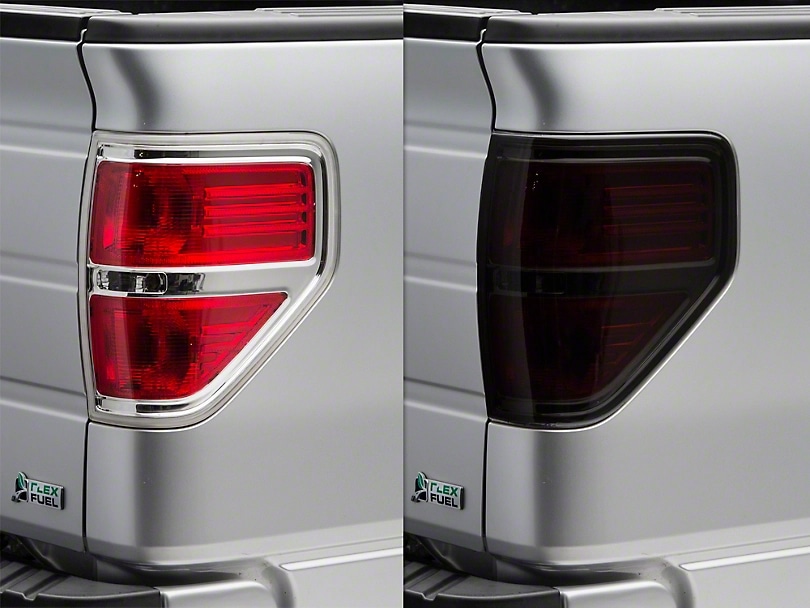
There are six states that explicitly prohibit drivers from tinting their tail lights if the vehicle is going to be driven on public roads.
Of course, if you have a track-only car, you are free to tint the lighting as desired, as long as the vehicle is not actually running on the roads.
These are the states where it is illegal to tint your tail lights:
- Illinois
- North Carolina
- Pennsylvania
- Tennessee
- Vermont
- Wisconsin
All Other States
One thing that all states have in common, including those mentioned above, is that they all require your tail lights to be red.
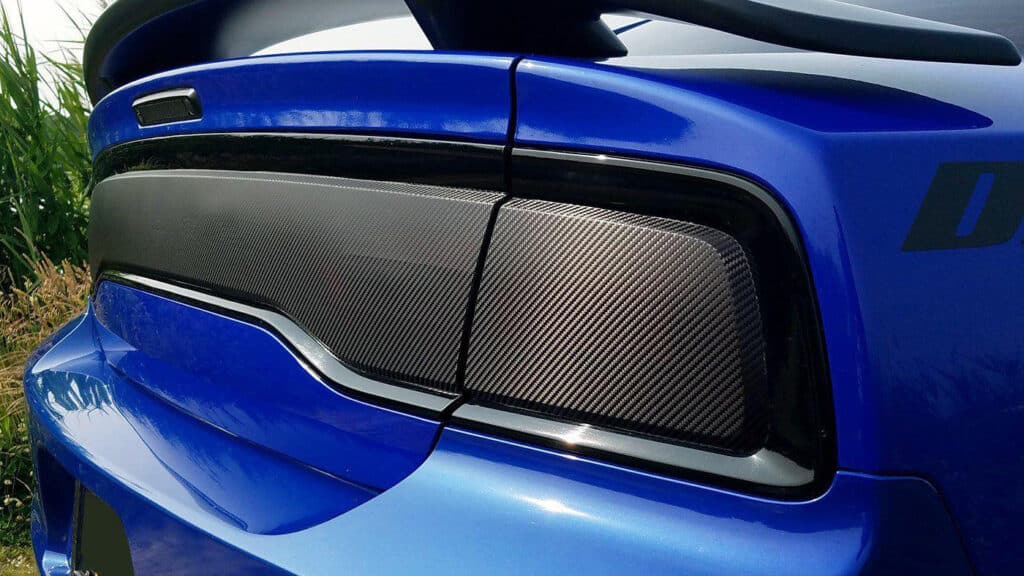
Most states do not have explicit laws regarding tail light tinting in particular. However, they do have rules about the type of lighting allowed and the mandatory visibility.
With this information, you can determine if blocking out a percentage of light emitted by your tail lights violates minimum visibility requirements (denoted by distance in meters).
Unfortunately, there is no hard and fast rule about how much tinting reduces the amount of light emitted because it depends on the shade and color of the tint as well as the tail lights themselves and how bright they are.
Below we’ve outlined the required visibility range for each state where tinting is not explicitly made illegal, as well as other information worth noting.
Alabama
Visibility Range (m): 500
Alaska
Visibility Range (m): 1,000
Arizona
Visibility Range (m): 500
Arkansas
Visibility Range (m): 500
Reflectors must be visible from 350 feet away.
California
Visibility Range (m): 1,000
Colorado
Visibility Range (m): 100
Clear visibility is required under normal sunlight.
Connecticut
Visibility Range (m): 1,000
Delaware
Visibility Range (m): 500
District of Columbia
Visibility Range (m): 500
Florida
Visibility Range (m): 300
Clear visibility is required under normal sunlight.
Georgia
Visibility Range (m): 500
All tail light lenses must be in good condition and adhere to manufacturer specifications.
Hawaii
Visibility Range (m): 200
Idaho
Visibility Range (m): 500
If the car is at least 30 years old, a small (no more than 1″ in diameter) blue or purple tail light insert is permitted.
Indiana
Visibility Range (m): 500
Iowa
Visibility Range (m): 500
OEM lights must be kept in working condition or replaced with similar lighting equipment.
Kansas
Visibility Range (m): 1,000
Kentucky
Visibility Range (m): 1,000
Louisiana
Visibility Range (m): 1,000
Maine
Visibility Range (m): 100
The 100 ft rule applies to brake lights.
Maryland
Visibility Range (m): 1,000
Massachusetts
Visibility Range (m): 500
Installing aftermarket lights that do not comply with the Federal Motor Vehicle Safety Regulations is restricted.
Michigan
Visibility Range (m): 500
Minnesota
Visibility Range (m): 500
Mississippi
Visibility Range (m): 500
If the car is classified as a street rod, a small (not more than 1 inch in diameter) blue or purple tail light insert is permitted.
Missouri
Visibility Range (m): 500
Montana
Visibility Range (m): 1,000
Nebraska
Visibility Range (m): 500
Nevada
Visibility Range (m): 500
New Hampshire
Visibility Range (m): 1,000
Tail lights must be in perfect working condition at all times.
New Jersey
Visibility Range (m): 500
New Mexico
Visibility Range (m): 500
The state does not require your tail lights to be in 100% perfect condition, only that they work well enough to be visible.
North Dakota
Visibility Range (m): 1,000
Ohio
Visibility Range (m): 500
Oklahoma
Visibility Range (m): 1,000
Oregon
Visibility Range (m): 500
If the car is older than 1959, a small (not more than 1 inch in diameter) blue or purple tail light insert is permitted.
Rhode Island
Visibility Range (m): 500
South Dakota
Visibility Range (m): 1,000
Texas
Visibility Range (m): 1,000
Utah
Visibility Range (m): Unspecified
Visibility distance is not specified; it is best to contact your local county DMV for information.
Washington
Visibility Range (m): 1,000
Wyoming
Visibility Range (m): 500
If the car is classified as a street rod, a small (not more than 1 inch in diameter) blue or purple tail light insert is permitted.
Additional Important Considerations
There are a few other things to consider before you get into modifying your rear lighting to make sure you are within legal limits and have a safe vehicle.
Let’s start with reflectors, then required lighting for license plates and an alternative to applying tail light tint.
Do Not Tint Your Reflectors
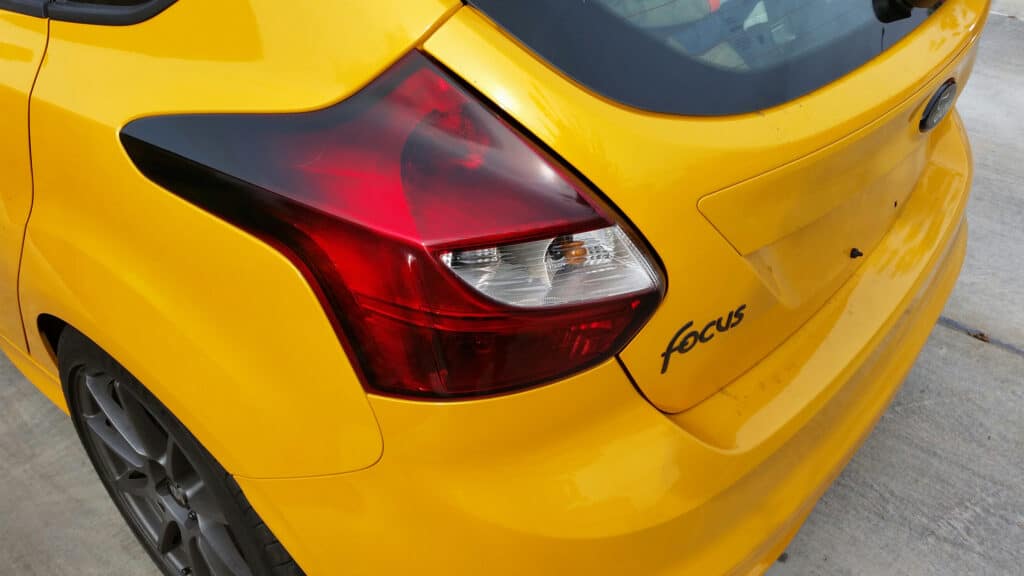
Many modern vehicles have reflectors in addition to tail lights. Sometimes these reflectors are part of the tail light assembly, whereas other times they might be separate.
It’s advisable to avoid tinting the reflectors especially when they are separate from the tail lights themselves.
When the reflectors are part of the tail light, adhering to the distance requirements for the tail lights will be sufficient.
License Plate Lighting
You are required to illuminate your license plate when driving on public roads, and these lights have to be white in color. Using other colors or illuminating the license plate frame isn’t permitted.
Additionally, the license plate lighting should not obscure the license plate itself or be directed elsewhere on the vehicle or toward the road. It has to illuminate the license plate so it is visible and readable.
Other than the white light for the license plate, you should not have any other white light fixtures on the rear of your car.
An Alternative to Tinting
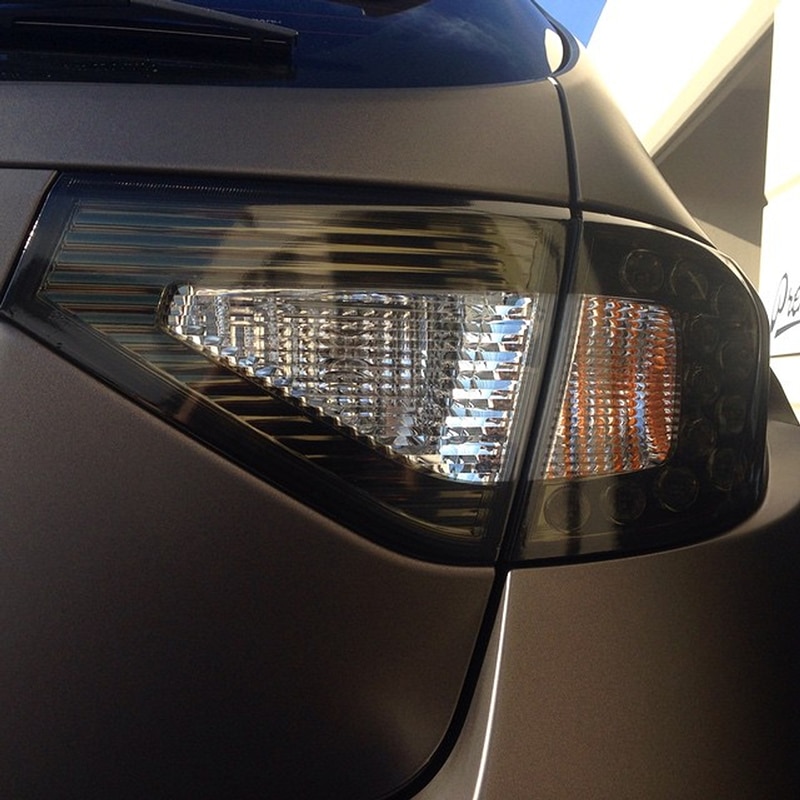
Instead of tinting your tail lights, you can also install clear tail light housings, or consider installing DOT-certified aftermarket tail lights.
Without tinting, though, you do not have to worry about how much you have reduced visibility, which is a benefit.
Conclusion: Are Tinted Tail Lights Legal?
In conclusion, as long as your tail lights emit red light and fall within the mandated visibility range, they’ll be legal.
Using any tint that obscures your tail lights beyond the specified limit or changes the color shade is illegal.
Similar laws apply to headlights. If you’re wondering whether it is legal to have colored headlights, check out our guide on the subject.
What do you think about smoked tail lights? Would you rather use tint or just install aftermarket lights? Let us know by leaving a comment below.
If this post helped you in any way, do share it on Reddit, Facebook, or your favorite car forums. We appreciate your support.


1 comment
Bought a set of tail lights for my 04 Toyota tundra that are DOT & SAE certified with a Darker red lens but not tinted from Autoholic Ink ,look great and in my opinion meet the 1000 m requirements for the state of Oklahoma.
P.S. I did switch to a Briter LED bulb just for reassurance.